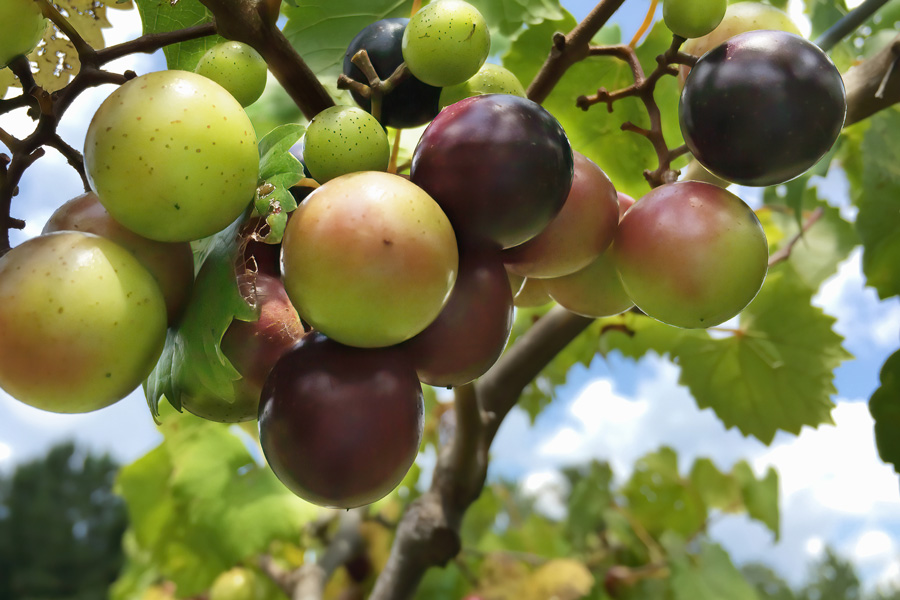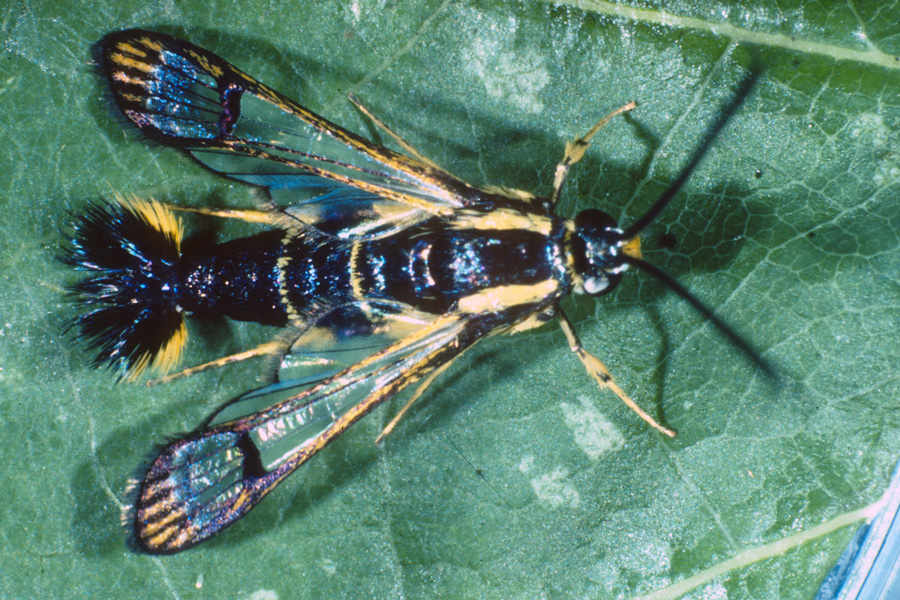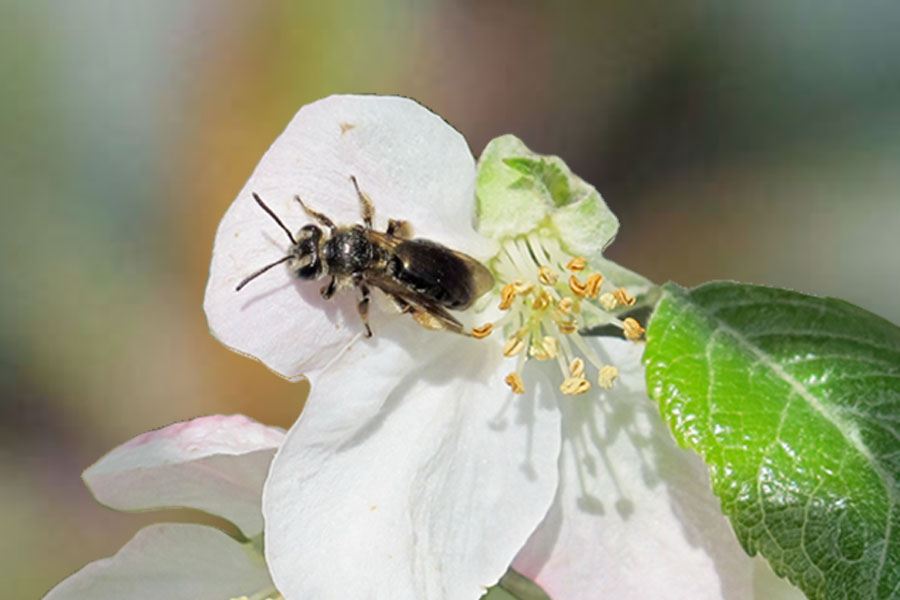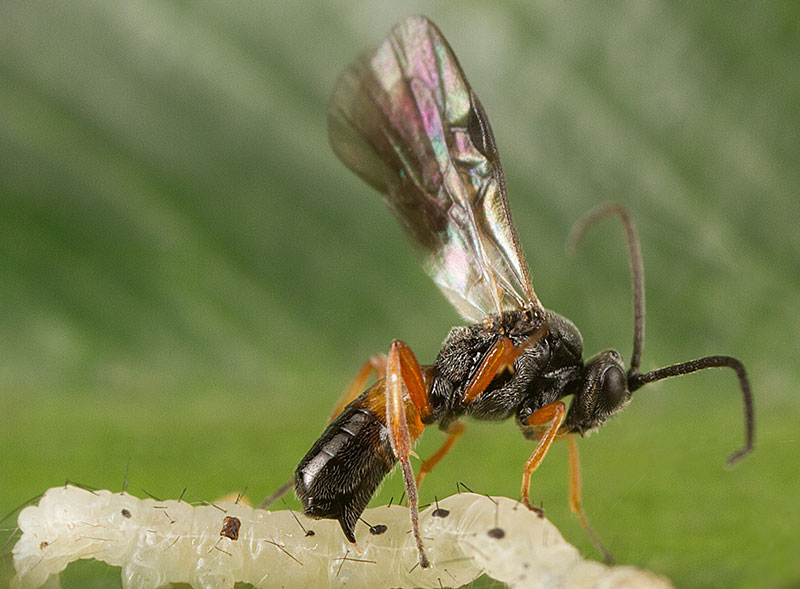Granulate ambrosia beetle, Xylosandrus crassiusculus (Mot.) in Figure 1a, is a serious pest of woody trees and shrubs in Georgia. The insect was previously known as the Asian ambrosia beetle. These tiny beetles were first detected in South Carolina in the 1970s and have spread across the Eastern U.S. Woody ornamental nursery plants and fruit trees are commonly affected. In spring or even in late winter (around mid-February), a large number of beetles can emerge and attack tree species, especially when they are young and stressed. Some highly susceptible tree species include Styrax, dogwood, redbud, maple, ornamental flowering cherry, Japanese maple, crapemyrtle, pecan, peach, apple, plum, persimmon, golden rain tree, sweetgum, Shumard oak, Chinese elm, magnolia, fig, Rhododendron and azalea. The female beetles land on the bark of woody trees before boring through the inner bark and softwood of the tree, finally settling in the heartwood where they begin carving galleries.
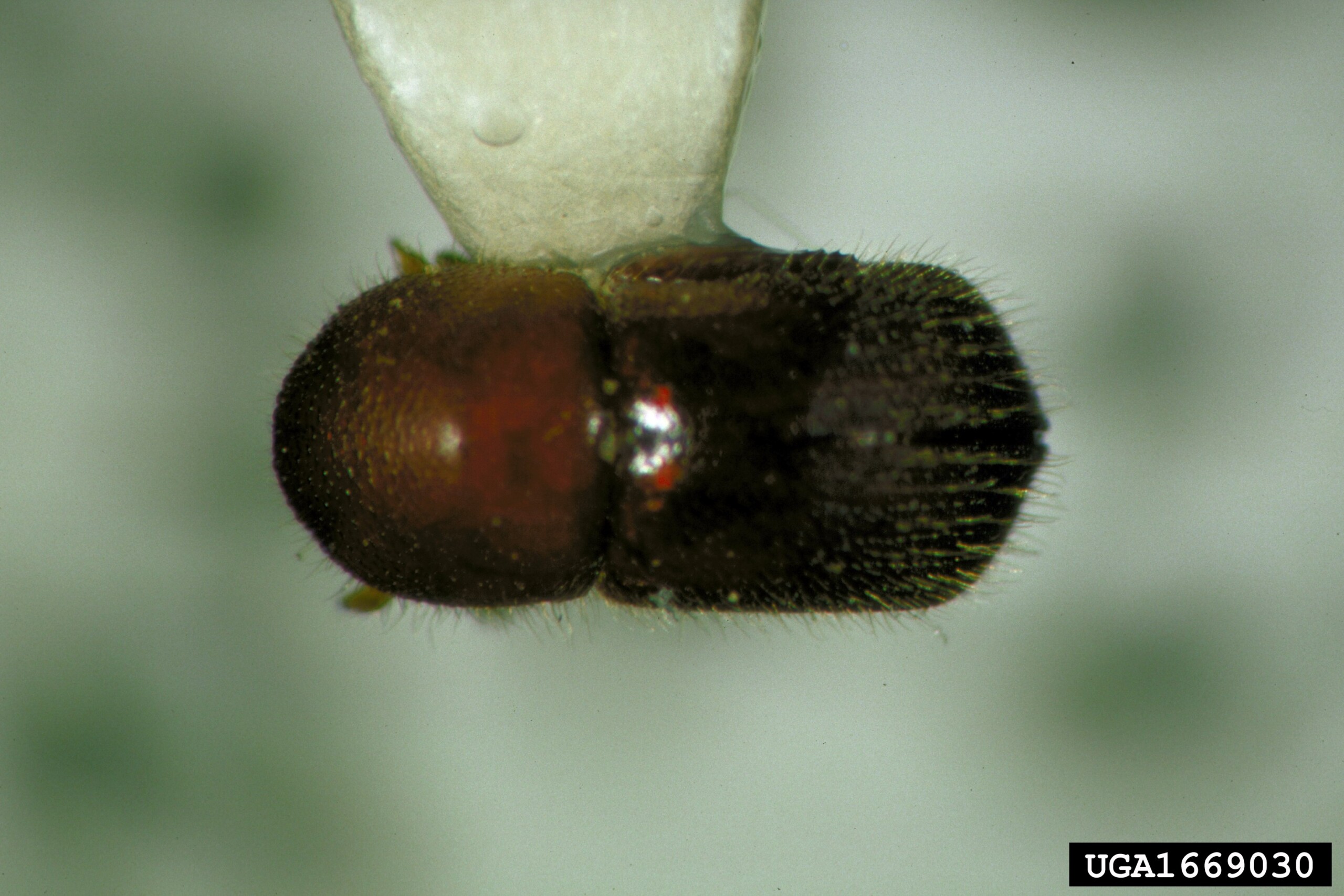

Figure 1a. Female granulate ambrosia beetle. Photo: Steve Passoa
Figure 1b. Sawdust “toothpick” symptom on trunk, indicating a granulate ambrosia beetle attack. Photo: G. Keith Douce
Biology
Female granulate ambrosia beetles commonly attack the trunks of young nursery trees and woody shrubs, although mature trees under stress are also susceptible. They drill a network of tunnels within the heartwood where they lay eggs. Similar to other beetles, granulate ambrosia beetles have egg, larval, pupal and adult stages. Except for adults, all other stages occur only within the tree trunk. In the galleries, eggs, larvae, and pupae can occur together (Figure 2). Adults introduce symbiotic “ambrosia” fungi into the galleries as a food source for the developing larvae. Adults feed on the same fungi and remain along with their young until they mature and become adults. The female granulate ambrosia beetle is about 2.5 millimeters (mm) long. The young females mate with their male siblings within the galleries. Females can readily fly, whereas the males are flightless and do not emerge from the home gallery.
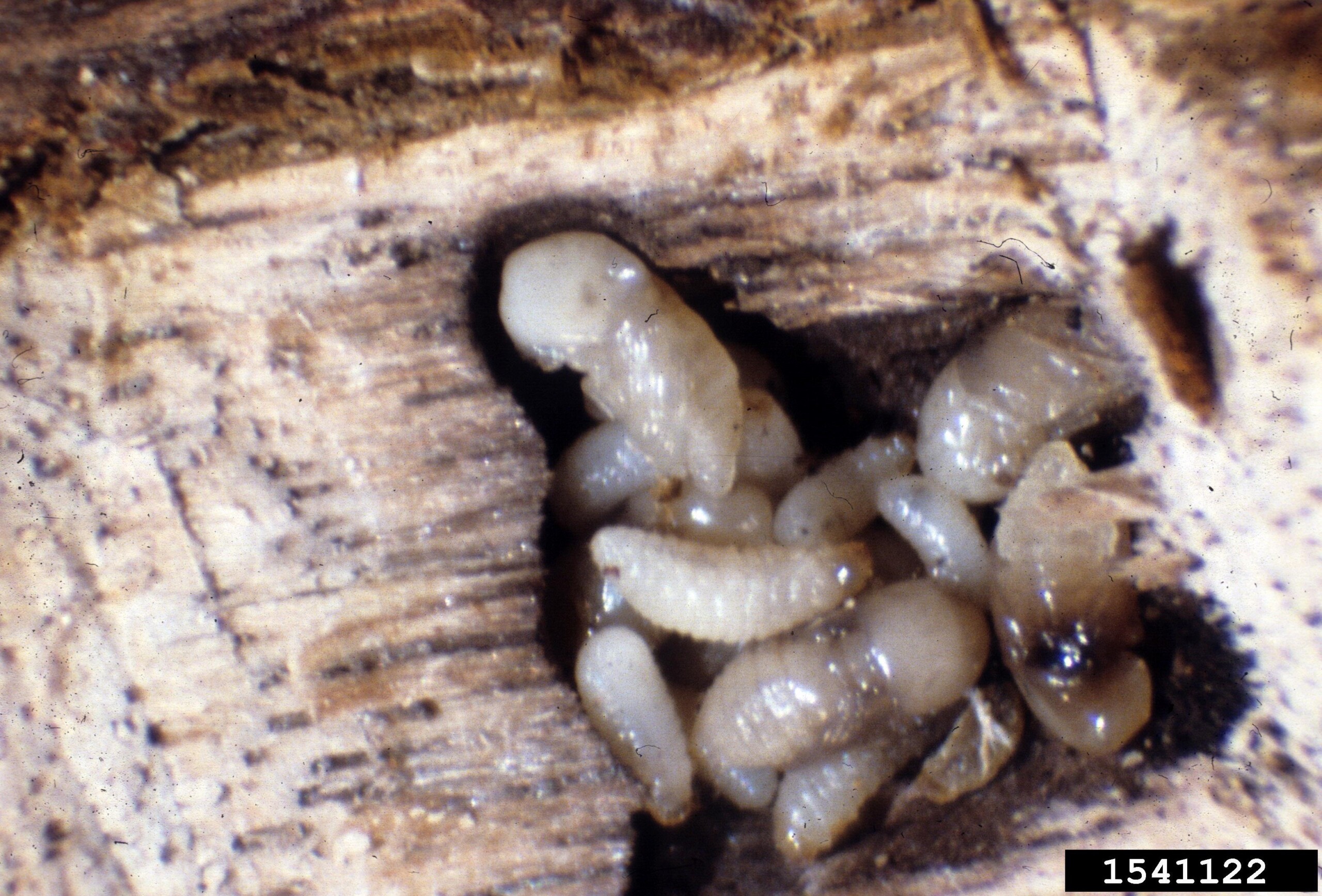
Mated females leave the host trees seeking new trees to invade and lay eggs. They generally attack trees stressed by drought, flooding, and mechanical wounding, but they can also infest trees that are apparently healthy. Infestations are typically found below shoulder height on the tree.
Damage
Symptoms of an active infestation include “toothpicks” or strings of sawdust pushed out of tiny pinholes bored in the bark (Figure 1b). Trees severely infested with granulate ambrosia beetle may show symptoms of stunting, delayed leaf emergence in spring, and premature defoliation. The toothpicks are delicate and can easily break apart and dissolve with rain or wind. They infest both young and old trees and these damage symptoms can be seen. Attacks on nursery trees or newly transplanted trees are often fatal. Once young trees are infested with ambrosia beetles in the nursery, they can serve as breeding sites for future infestations.
Monitoring and management
Once adults of granulate ambrosia beetle bore through the bark, there are limited control options to mitigate the problem. Beetles protected in the heartwood of the tree are less likely to be exposed to insecticides. The beetles do not consume the wood, which further minimizes their insecticide exposure, even if using systemic products containing neonicotinoid or diamide insecticides.
Pyrethroid insecticides such as permethrin or bifenthrin can be used as preventative sprays to repel invading females and as a rescue treatment if applied quickly after the attack is initiated. Thus, the insecticide application timing becomes critically important for management. The insecticide applications can be properly timed with trap captures or adult activity. The simplest method to determine adult activity in the area is using an alcohol-based trap (Figure 3) or a bolt of wood (Figure 4) around 2 to 4 inches in diameter and 2 feet long. Any hardwood species such as maple will work for building traps. A half-inch diameter hole drilled down the center of the bolt as deep as possible is filled with alcohol and the opening closed using a stopper cork. Ethyl alcohol (greater than 70%) can be found at most liquor or drug stores. The denatured version found in drug stores also works, but rubbing (isopropyl) alcohol does not. In a pinch, hand sanitizer with 75% ethanol content can serve as a substitute. Hang several bolt traps along the woodland border of a nursery at waist height to determine beetle emergence and activity. Sawdust toothpicks (Figure 4) will beg into appear on the bolt of wood when they are infested with adult beetles. Once sawdust toothpicks are detected on a bolt trap, daily scouting should occur on nearby trees.
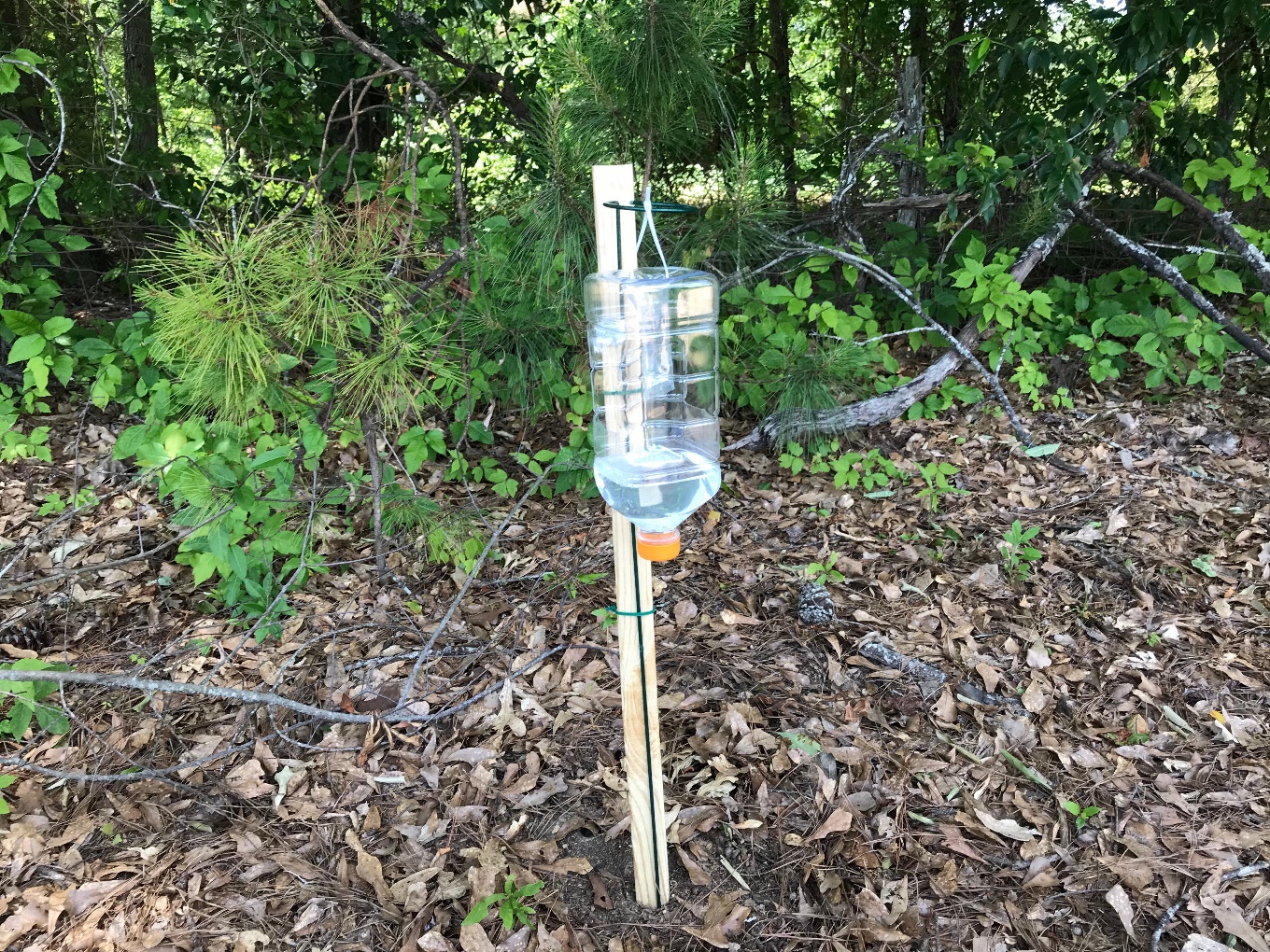
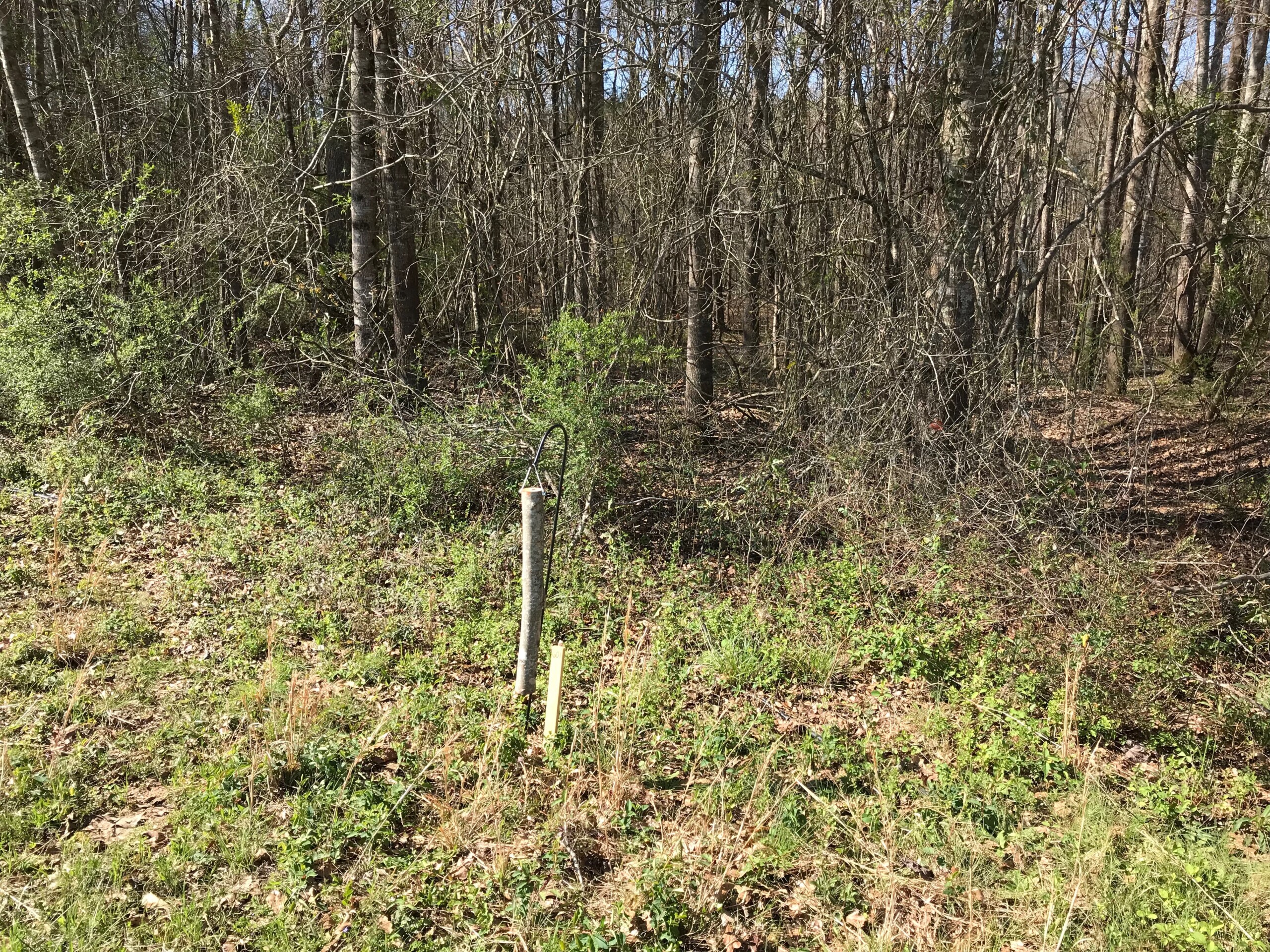
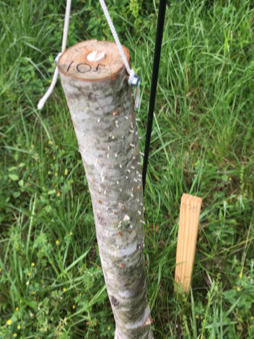
Figure 4. Bolt trap deployed along wood border. Photos: Shimat V. Joseph
If sawdust toothpicks are detected on the bolt trap, immediately spray a pyrethroid insecticide on nursery trees. Be prepared to act quickly when beetle activity is confirmed. If practical, the entire nursery should initially be treated with an area-wide application to repel beetle activity. If individual trees are found to be infested, immediately apply targeted sprays to the trunk. Insecticide applications will not provide total control. Reapplying insecticide is generally required at frequent intervals until spring green-up is complete in areas where the beetle pressure is moderate to severe (greater than 10 holes). Recent studies show that the residual effects of permethrin occur up to four weeks. but bifenthrin insecticide residues will not consistently reduce ambrosia beetle attack for more than 10 days. If the infested trees show no signs of wilt, the entry holes created by beetles on the tree trunk will heal with time and those trees can be still marketed. The removal of infested trees is not always necessary.
Trees that are otherwise healthy can withstand a low level of beetle infestation. Timely irrigation and adequate fertilization of trees throughout the growing season will increase a tree’s tolerance to beetle infestations. Highly saturated, anaerobic soil conditions can cause tree root stress. If soil media moisture is greater than 50%, it can attract ambrosia beetles, so maintaining a soil media moisture level below 50% will help reduce ambrosia beetle attacks. Woody trees planted in low-lying areas, which are likely to be flooded with prolonged rain events need to be closely monitored, as the poor drainage can increase the chances of infestation. Although ambrosia beetles can have multiple generations throughout the year and are strongly attracted to trees that are drought stressed, waterlogged, injured, or excessively pruned, attacks on healthy plants in the nursery are rare. Most losses occur during the spring green-up flush of new growth. Pay close attention to irrigation needs during extended summer and fall drought periods to minimize tree stresses. Avoid mechanical wounding of trees with maintenance equipment that could serve as entry points for the ambrosia beetles.
Because of abrupt winter temperature changes in Georgia, it is critical that the monitoring traps be deployed starting the first week of February. The warmer periods during a mild winter may trigger an early beetle emergence and infestation.
References:
Anderson, D. M. (1974). First record of Xyleborus semiopacus in the continental United States (Coleoptera: Scolytidae). U.S. Department of Agriculture Cooperative Economic Insect Report 24: 863-864.
Browne, F. G. (1961). The biology of Malayan Scolytidae and Platypodidae. Malayan Forest Records 22: 1-255.
Graham, K. (1968). Anaerobic induction of primary chemical attractancy for ambrosia beetles. Canadian Journal of Zoology,46(5), 905-908. doi:10.1139/z68-127
Cole, K. W. (2008). Granulate Ambrosia Beetle. Indiana Department of Natural Resources. Retrieved from http://www.in.gov/dnr/entomolo/files/ep-GranulateAmbrosiaBeetleFactsheet.pdf
Frank, S., & Bambara, S. (2009). The granulate (Asian) ambrosia beetle. Ornamental and turf. Insect note. North Carolina State University.
Frank, S. D., Anderson, A. L., & Ranger, C. M. (2017). Interaction of Insecticide and Media Moisture on Ambrosia Beetle (Coleoptera: Curculionidae) Attacks on Selected Ornamental Trees. Environmental Entomology,46(6), 1390-1396. doi:10.1093/ee/nvx163
Ranger, C. M., Reading, M. E., Schultz, P. B., Oliver, J. B., Frank,
S. D., Addesso, K. M., . . . Krause, C. (2016). Biology, Ecology, and Management of Nonnative Ambrosia Beetles (Coleoptera: Curculionidae: Scolytinae) in Ornamental Plant Nurseries. Journal of Integrated Pest Management,7(1). doi:10.1093/jipm/pmw005
Reading, M. E., Ranger, C. M., Oliver, J. B., & Schultz, P. B. (2013). Monitoring Attack and Flight Activity of Xylosandrus spp.(Coleoptera: Curculionidae: Scolytinae): The Influence of Temperature on Activity. Journal of Economic Entomology,106(4),1780-1787. doi:10.1603/ec13134
Reading, M. E., & Ranger, C. M. (2017). Residue Age and Attack Pressure Influence Efficacy of Insecticide Treatments Against Ambrosia Beetles (Coleoptera: Curculionidae). Journal of Economic Entomology,111(1), 269-276. doi:10.1093/jee/tox327



